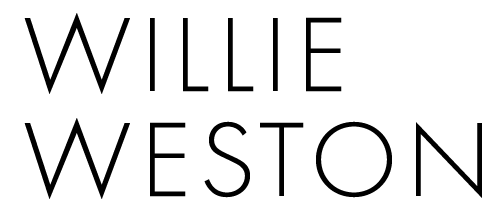Mavis Ngallametta: colour and alchemy
WARNING: Aboriginal and Torres Strait Islander readers are warned that photographs in this article contain images of a deceased person.
Mavis Ngallametta painting large-scale work. Photo: Gina Allain.
This piece first appeared on The Design Files on 10 October 2017. Updated March 2024.
Mavis Ngallametta’s (1944-2019) large-scale paintings, a selection of which were exhibited at Martin Browne Contemporary in Sydney recently, are both derived from, and imbued with, the material richness of her natural environment. Incorporating white ochres from the cliffs of Ikalath on the west coast of the Cape York Peninsula, mixing fecund greens from a combination of yellow ochre pigment and charcoal - Mavis is both a master colourist and an alchemist of sorts. Her bountiful and interwoven depictions of the waterways, geological formations and flora around Aurukun show her to be a painter of great vision and complexity.
Mavis Ngallametta, My Country - Kendall River 2017, natural ochres and charcoal with acrylic binder on linen, 201 x 272cm. © Mavis Ngallametta. Image courtesy the artist and Martin Browne Contemporary.
Mavis Ngallametta collecting white ochre, Ikalath. Photo: Martin Browne.
Like a number of prominent female First Nations artists, Mavis, an elder of the Putch clan and a cultural leader of the Wik and Kugu people of Aurukun, began her career as a weaver. Taught by senior Wik and Kugu women on country and at the mission school, she became proficient in, and renowned for, creating mats, baskets and dilly bags from cabbage palm and pandanus. In 2009 she became involved with Ghost Nets Australia, a movement spearheaded by Indigenous communities to bring attention to the plastic fishing nets killing marine life and making landfall on beaches around Northern Australia. The project eloquently marries artistic and environmental concerns in the creation of beautiful sculptures woven from discarded nets. In 2008 Mavis began experimenting with painting, participating in a workshop at the Wik and Kugu Art Centre run by facilitator Gina Allain. Relatively quickly she began working in two dimensions with natural ochres and charcoals.
Whilst not prolific - she has completed less than 40 large scale paintings in the last seven years - Mavis’ output has been impressively consistent in terms of quality (almost a quarter of those works have been acquired by public institutions such as Queensland Art Gallery’s Gallery of Modern Art, National Gallery of Australia and the Art Gallery of NSW) and artistic vision. Despite her success, Mavis’ achievements have been quietly won - her luscious, multi-layered works are still unknown to many.
Mavis Ngallametta, Pundum 2016, natural ochres and charcoal with acrylic binder on linen, 270 x 199cm. ©Mavis Ngallametta. Image courtesy the artist and Martin Browne Contemporary.
Mavis Ngallametta, Small Horse Creek 2017, natural ochres and charcoal with acrylic binder on linen, 272 x 201cm. ©Mavis Ngallametta. Image courtesy the artist and Martin Browne Contemporary.
Mavis depicts her traditional country of Kendall River, but also draws inspiration from other places around Aurukun where she lives. “At the moment I love painting the swamps and swampy areas”, Mavis says, in conversation with Gina Allain.
“If you come to Aurukun you will see lots of swamps with a lot of water lilies, lots of birds and lots of different coloured swamp flowers.”
Swampy Area at Yalgamungken 2017, depicts the flowers and birds that appear at the end of the dry season at Yalgamungken, where she collects her yellow ochre.
Swampy landscape around Aurukun, Cape York Peninsula in Far North Queensland. Photo: Gina Allain.
Mavis Ngallametta, Swampy Area at Yalgamungken 2017, natural ochres and charcoal with acrylic binder on linen, 272 x 201cm © Mavis Ngallametta. Image courtesy the artist and Martin Browne Contemporary.
Mavis Ngallametta, Low Down Swamp 2016, natural ochres and charcoal with acrylic binder on linen, 270 x 199cm © Mavis Ngallametta. Image courtesy the artist and Martin Browne Contemporary.
Swampy landscape around Aurukun, Cape York Peninsula in Far North Queensland. Photo: Gina Allain.
Mavis Ngallametta fishing. Photo: Gina Allain.
Works begin with a blue acrylic base colour - the blue of the Arafura Sea surrounding Cape York. From there, the painting is made from the landscape. Mavis says:
“I can make many colours from the yellow, red, black and white [ochres]... I mix the yellow ochre with the black…from the charcoal and I get greens. I mix the red and yellow and I get oranges. If I mix the white clay with the red ochre I get pink… I cook the yellow ochre to get the red and depending on the length of time you cook it, and the colour of the yellow that I have collected, it makes different shades of red.”
Mavis Ngallametta painting large scale work. Photo: Gina Allain.
Her environmental concerns, so powerfully expressed in her ghost net weavings, are sometimes present in Mavis’ paintings too, with the fishing nets and oil drums that wash up on the beach at Aurukun incorporated into her densely painted compositions. The presence of this unwanted detritus is jarring alongside depictions of wetlands in full flourish, and reminds us that for artists like Mavis to continue their relationship with these bountiful ecosystems, they need protection.
Mavis Ngallametta, Ikalath #6 2012, natural ochres and charcoal with acrylic binder on linen, 276 x 195cm. ©Mavis Ngallametta. Image courtesy the artist and Martin Browne Contemporary.












